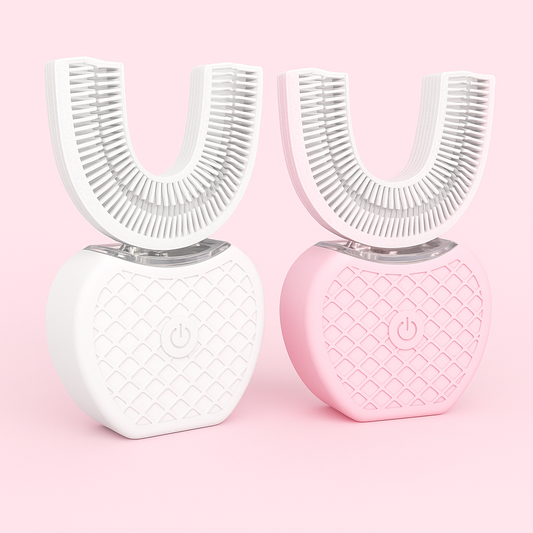Introduction
In 2025, more consumers are seeking gentle, effective oral-care solutions that avoid fluoride while still supporting enamel health and producing a whiter smile. Toothpastes that combine xylitol and niacinamide (vitamin B3) offer a promising option: xylitol helps reduce harmful oral bacteria and acidity, while niacinamide can soothe gums and support soft-tissue health. This long-form guide explains how these ingredients work, what to look for on labels, how to use them safely, and where to find quality fluoride-free options — including curated selections available from Havana Body.
Quick summary: Who this is for
- People who want gentle, non-bleaching whitening and improved surface stain removal.
- Those preferring fluoride-free oral-care products due to personal choice or sensitivity.
- Anyone looking to support gum health and reduce cavity-causing bacteria with alternative actives.
- Consumers seeking toothpastes that combine antibacterial, anti-inflammatory, and enamel-supporting ingredients.
How whitening actually works
There are two primary ways a toothpaste can make teeth look whiter:
- Removing surface stains through gentle polishing agents (silica, low-abrasion silica, or enzyme-based systems).
- Changing the optical properties of enamel/dentin via bleaching agents (peroxides) — not present in the fluoride-free, non-bleaching toothpastes discussed here.
Fluoride is primarily for remineralization and cavity prevention; it is not a whitening agent. If you avoid fluoride but want brighter teeth, focus on surface-stain removal plus supporting the health and mineral content of enamel with remineralizers like nano-hydroxyapatite or calcium phosphate.
Xylitol: antimicrobial benefits without sugar
Xylitol is a sugar alcohol commonly used as a sweetener. In oral care it’s valued not for sweetness but for its ability to reduce cariogenic bacteria activity and lower plaque acidity. Benefits include:
- Interfering with bacterial metabolism — many oral bacteria cannot effectively ferment xylitol, reducing acid production.
- Helping maintain a more neutral oral pH, which lowers the risk of demineralization.
- Reducing plaque accumulation when used regularly as part of a daily routine.
Note: Toothpastes are one delivery method — xylitol is also effective in gums, mints, and rinses. Concentrations and formulation matter; look for products that list xylitol prominently in the ingredient list.
Niacinamide: calming, barrier-supporting vitamin B3
Niacinamide is widely used in skincare for its anti-inflammatory and barrier-supporting effects. In oral-care formulas it can:
- Help reduce gum inflammation and support mucosal health.
- Improve the appearance of irritated gums over time with consistent use.
- Complement antimicrobial ingredients by promoting a healthier soft-tissue environment.
Niacinamide is not a bleaching ingredient, but by improving gum health and reducing inflammation it can contribute to a healthier-looking smile.
Complementary ingredients to look for
When evaluating fluoride-free xylitol + niacinamide toothpastes, check for these complementary actives:
- Nano-hydroxyapatite: A mineral analogue to tooth enamel that helps remineralize and reduce sensitivity.
- Calcium phosphates: Provide basic building blocks for enamel repair in some fluoride-free formulas.
- Low-abrasion silicas: Provide gentle polishing for surface stains without wearing enamel.
- Enzymes and probiotics: Some formulations include enzymes to help remove biofilm or probiotics aimed at rebalancing oral microbiota.
- Antioxidants and plant extracts: Green tea extract, xylitol-compatible botanicals, and other extracts can help with freshness and anti-inflammatory support.
Benefits and limitations: realistic expectations
Understanding what this class of toothpaste can and cannot do will help you choose the right product and routine.
- Benefits:
- Gentle reduction of surface stains over weeks with consistent use.
- Support for gum health and reduced inflammation thanks to niacinamide.
- Lower plaque acid and bacterial adhesion from xylitol, contributing to less enamel breakdown.
- Limitations:
- Not an instant bleaching solution — no peroxide means slower, subtler whitening focused on surface stains.
- Ineffective for intrinsic staining (deeply embedded discoloration) — professional treatments may be required.
- Effectiveness depends on formulation quality and consistent use.
Safety and dental considerations
- If you have active cavities, high caries risk, or a history of enamel erosion, discuss stopping fluoride with your dentist before switching to fluoride-free products.
- Toothpaste abrasivity matters: look for low-RDA formulas and avoid aggressive scrubbing to protect enamel and restorations.
- Niacinamide is generally well tolerated; discontinue if you notice irritation and consult a healthcare professional.
- People with extensive dental restorations should be cautious with polishing agents that might change surface appearance — ask your dentist what they recommend.
How to evaluate labels and ingredient lists
When comparing products, these factors will help you spot genuinely beneficial xylitol + niacinamide toothpastes:
- Ingredient prominence: Is xylitol listed high in the ingredient list rather than near the end as a minor sweetener?
- Niacinamide inclusion: Check that niacinamide is included as an active or functional ingredient.
- Remineralizers: Presence of nano-hydroxyapatite, calcium phosphates, or similar minerals.
- Abrasivity/RDA: Look for claims of low abrasivity or RDA values if provided.
- Free-from claims: Confirm ‘fluoride-free’ is listed explicitly if that is important to you.
Top xylitol + niacinamide toothpaste types to consider
Instead of specific brand endorsements, here are tested product types and formulations to look for. Each style suits different priorities.
- Daily Gentle Brightener: Low-abrasion silica + xylitol + niacinamide + nano-hydroxyapatite. Best for sensitive teeth and daily stain management.
- Natural Ingredients Blend: Plant extracts + xylitol + niacinamide, with mild polishing agents. Ideal for those prioritizing natural formulations.
- Clinical-like Remineralizing Paste: Stronger mineral content (nano-hydroxyapatite or calcium phosphates) plus xylitol and niacinamide for targeted enamel support.
- Brightening Serum Paste: Refined polishing silica + xylitol + niacinamide for users wanting a quicker visible improvement in surface stain removal.
- Budget Fluoride-free Option: Basic formulation with xylitol and niacinamide that balances affordability and functional benefits.
If you prefer to shop curated selections, explore quality fluoride-free lines and targeted toothpaste options at Havana Body — they carry a selection focused on oral-care innovations and natural alternatives. Browse products like "toothpaste without fluoride" and "toothpaste with xylitol" on their site to compare options: toothpaste without fluoride.
Daily routine: morning and night
Consistency is key. Here’s a practical, dentist-friendly daily routine that emphasizes safety and results.
-
Morning:
- Brush 2 minutes with your xylitol + niacinamide toothpaste using a soft-bristled brush.
- Floss or use interdental cleaners to remove plaque between teeth.
- Finish with a non-alcoholic, fluoride-free mouth rinse if you prefer to avoid fluoride entirely.
-
Evening:
- Brush 2 minutes before bed with the same toothpaste.
- Consider a topical remineralizing gel or rinse (nano-hydroxyapatite) once or twice a week for extra enamel support.
- Avoid acidic drinks right before bed to reduce overnight enamel exposure to acid.
Tips to maximize whitening without fluoride
- Use a soft toothbrush and avoid heavy-handed brushing.
- Consider a whitening toothpaste rotation: alternate a xylitol + niacinamide paste with a gentle polishing formula for a few weeks at a time to avoid abrasion buildup.
- Cut back on high-stain foods and drinks (coffee, tea, red wine) or rinse with water after consuming them.
- Maintain regular dental check-ups and professional cleanings every six months or as directed.
Common myths about fluoride-free whitening
- Myth: Fluoride-free equals weak enamel. Fact: Many fluoride-free toothpastes include mineral-based remineralizers (like nano-hydroxyapatite) that support enamel strength.
- Myth: Whitening toothpaste always bleaches teeth. Fact: Most whitening toothpastes are surface-polishing and do not contain bleaching agents unless explicitly labeled.
- Myth: Xylitol will instantly whiten teeth. Fact: Xylitol helps reduce bacterial acid and can support stain reduction over time, but it is not a bleaching agent.
Who should avoid fluoride-free alternatives?
Consider staying with fluoride toothpaste or consulting a dentist if you:
- Have a high risk of tooth decay or frequent cavities.
- Have frequent enamel erosion due to acid reflux or dietary acids.
- Are unsure about past dental history — ask your dentist for personalized guidance.
Expanded FAQ
-
Q: Can fluoride-free toothpastes really protect enamel?
A: Some fluoride-free formulas include proven remineralizing minerals like nano-hydroxyapatite and calcium phosphate that can help rebuild mineral content. The protective effect depends on the specific ingredients and use.
-
Q: How long before I see a whitening effect?
A: For surface-stain reduction, many users notice subtle improvements within 2–6 weeks of consistent twice-daily use. Results vary by diet, smoking status, and initial staining level.
-
Q: Are there side effects?
A: Most people tolerate xylitol and niacinamide well in toothpaste; some may experience mild irritation to gums or mucosa, in which case discontinue and consult a professional.
-
Q: Can I use this with professional whitening?
A: Yes. A xylitol + niacinamide toothpaste can be part of a maintenance routine after professional whitening, but consult your dentist to align treatments safely.
Where to buy trusted fluoride-free, xylitol + niacinamide products
Many specialty retailers and natural-care stores stock fluoride-free toothpastes, but it helps to shop curated collections where ingredient quality is verified. For convenient browsing of well-formulated options, consider checking Havana Body's selection. They provide product descriptions and ingredient lists to help you compare toothpaste with xylitol and niacinamide: toothpaste with xylitol. You can also find items labeled as niacinamide toothpaste and selections listed under best toothpaste for whiter teeth if you’re aiming for both brightness and oral health support.
Final checklist before purchase
- Xylitol listed prominently among ingredients.
- Niacinamide present and not buried as a trace ingredient.
- Complementary remineralizers (if you avoid fluoride entirely).
- Low abrasivity and no peroxide if you want non-bleaching whitening.
- Positive user reviews and clear ingredient transparency.
Conclusion: Gentle whitening that supports enamel and gum health
Switching to a fluoride-free toothpaste that combines xylitol and niacinamide can be an excellent strategy for people who want gradual, gentle whitening while prioritizing gum health and a more balanced oral microbiome. These formulas are best for removing surface stains and supporting enamel indirectly, especially when paired with remineralizing ingredients like nano-hydroxyapatite.
Ready to explore high-quality fluoride-free options that emphasize xylitol and niacinamide? Discover curated, ingredient-transparent toothpaste choices and other wellness essentials at Havana Body. Browse their selection of toothpaste that whitens teeth, toothpaste whitening best, and more to find the right fluoride-free fit for your routine. Visit Havana Body to compare formulations, read ingredient lists, and make an informed purchase: best toothpaste whitening teeth.
For persistent discoloration, sensitivity, or a history of cavities, schedule a dental visit to determine if a fluoride-inclusive strategy or professional treatment is medically recommended. Otherwise, consistent use of a thoughtfully formulated xylitol + niacinamide toothpaste can help you achieve a healthier, brighter smile the gentle way.


